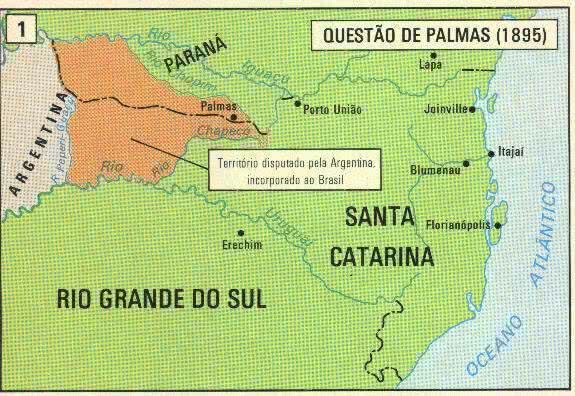Between the 16th and 17th centuries, we observed that the validity of the Iberian Union (1580 – 1640) and the development of other actions stipulated a new design for the process of occupation of the colonial space Brazilian. In addition to the invalidation of the Treaty of Tordesillas (given at the time when Spain and Portugal were governed by the same crown), the action of the pioneers, cattle raisers and Jesuits had great weight for our territory to become bigger.
Reaching the 18th century, we noticed that the limits of Portuguese and Hispanic colonization in the Americas should be rethought based on criteria that were in accordance with the occupation. developed. In fact, we noted that this was not a simple execution process. After all, the reformulation of colonial boundaries involved meeting political interests that went beyond the demand of governments responsible for fabricating such contracts.
In 1713, a first treaty was signed with the aim of defining the process of occupation of the Amazon region. Signed between France and Portugal, this first treaty established the withdrawal of the French from the left bank of Rio Amazonas and instituted the Oiapoque river as the natural boundary for the French and Portuguese lands in the northern region of the territory. This treaty was signed in the Dutch city of Utrecht, which soon served for another negotiation between Spain and Portugal.
In the year 1715, Portugal and Spain returned to the same Dutch city to define boundary issues in the southern region of the territory. By this agreement, the Spaniards recognized the colony of Sacramento, which was close to the city of Buenos Aires. This agreement ended up generating dissatisfaction among the Castilians, who founded the colony of Montevideo in 1726. Eleven years later, aiming to guarantee control of the southern region, the Portuguese founded the colony of Rio Grande.
Do not stop now... There's more after the advertising ;)
Seen as one of the most important diplomatic agreements of the 18th century, the Treaty of Madrid of 1750 called for the adoption of the principle of “uti possidetis” (that is, useful possession of the land) so that the Portuguese and Spanish borders were finally defined. Through this new measure, the border limits in the Mato Grosso and Amazon regions were guaranteed. Furthermore, this same agreement proposed the handover of the colony of Sacramento to the Spaniards in exchange for the region of the Sete Povos das Missões.
The promotion of this agreement ended up fostering the development of the so-called “Guerras Guaraníticas” (1753 - 1756), in which priests Jesuits from the Sete Povos region refused to be transferred to other lands or to submit to domain Portuguese. With this conflict, we observe that the Treaty of Madrid had to be annulled until the formulation of another agreement capable of solving the problems of the southern region. It was then that, in 1777, the Treaty of Idelfonso was signed between Portugal and Spain.
By this new agreement, the Portuguese would have their authority in the regions of Rio Grande and Santa Catarina assured. In return, the Spaniards would definitely keep the colonies of Sacramento and the region of Sete Povos das Missões. Despite the new determination, the Portuguese ended up retaining control of the Jesuit regions in the south. Thus, the Treaty of Badajós, of 1801, ended up making Portuguese rule in the Sete Povos das Missões official.
By Rainer Sousa
Master in History
Would you like to reference this text in a school or academic work? Look:
SOUSA, Rainer Gonçalves. "The new limits treaties of Portuguese America"; Brazil School. Available in: https://brasilescola.uol.com.br/historiab/os-novos-tratados-limites-america-portuguesa.htm. Accessed on June 28, 2021.


